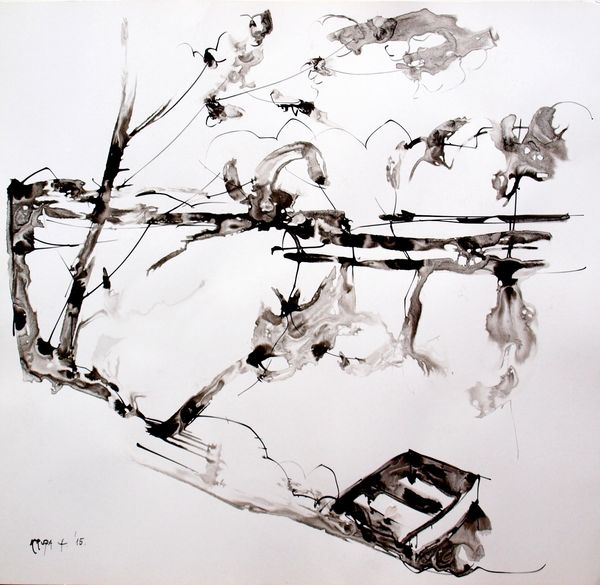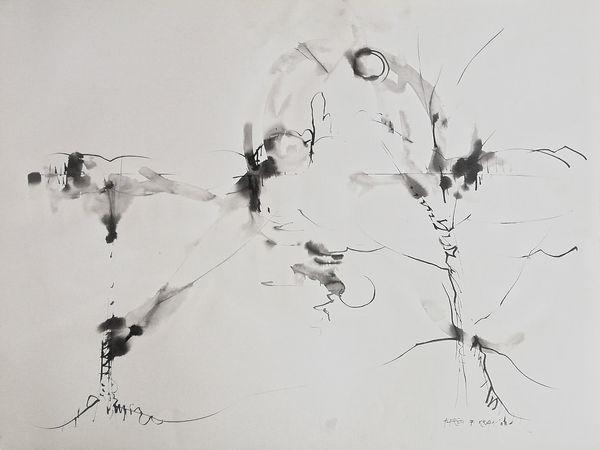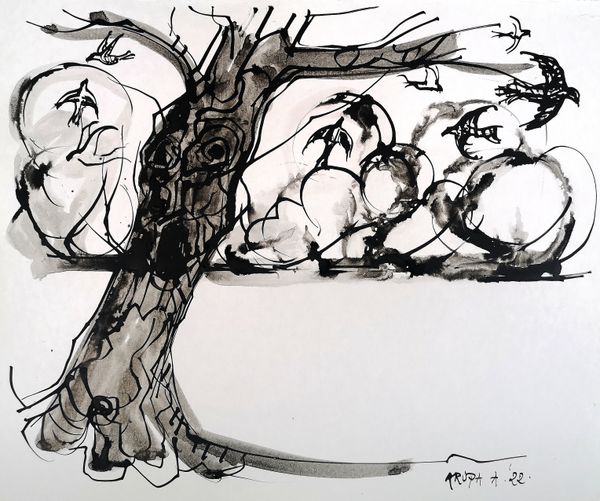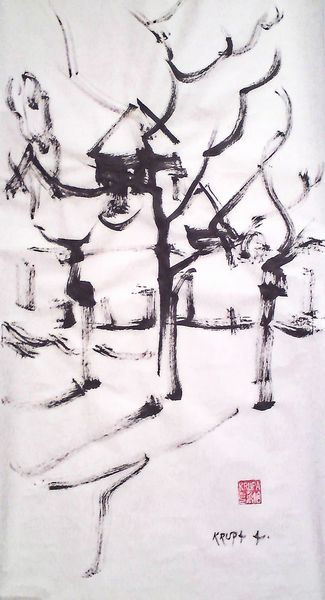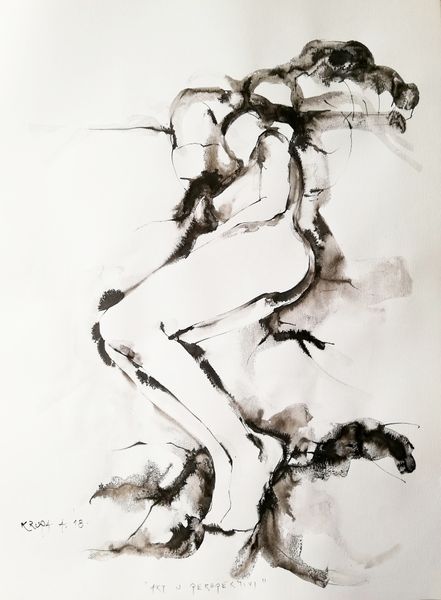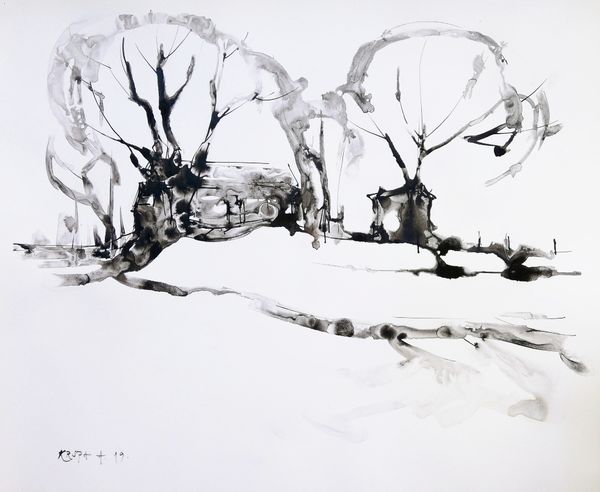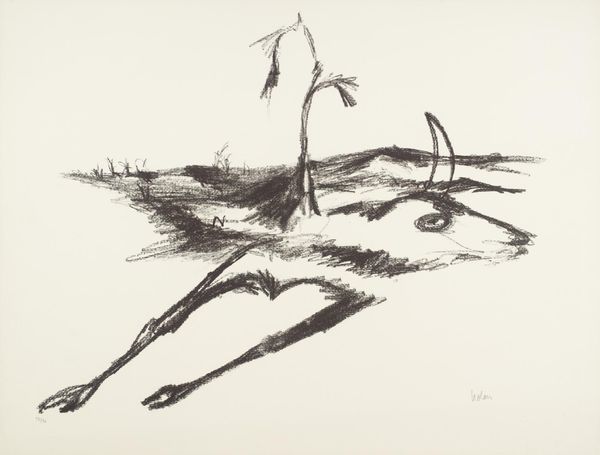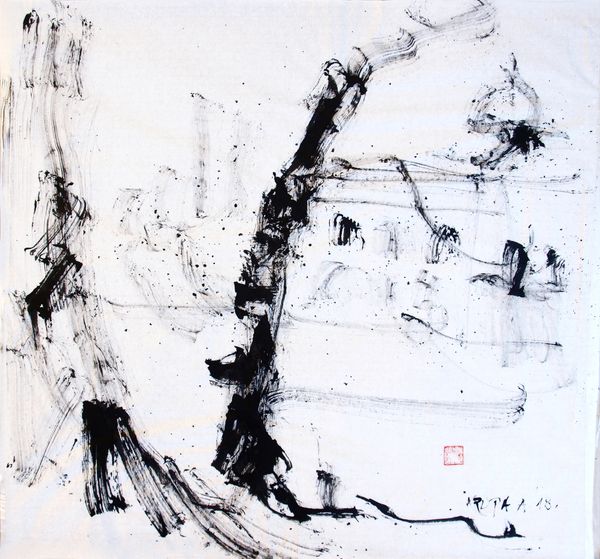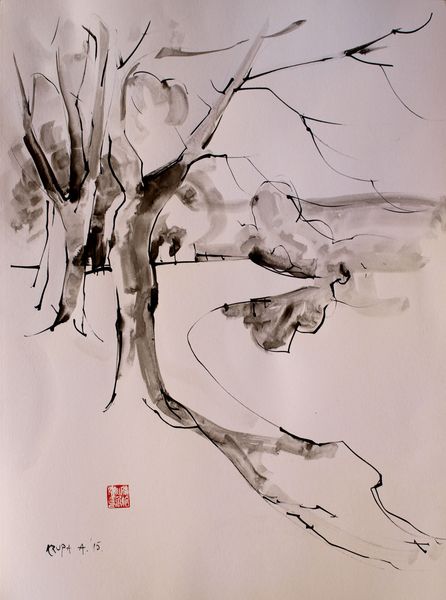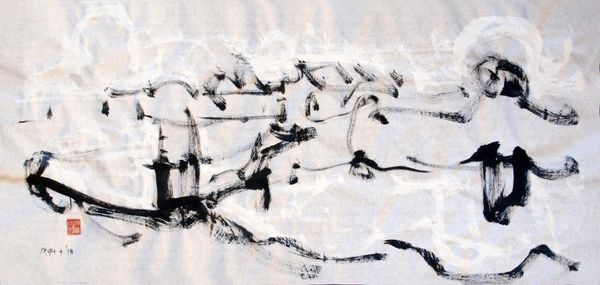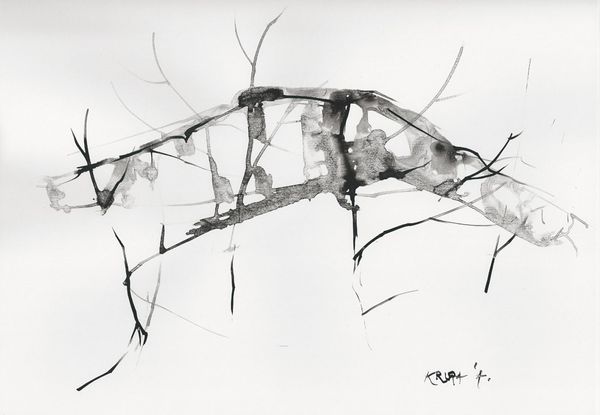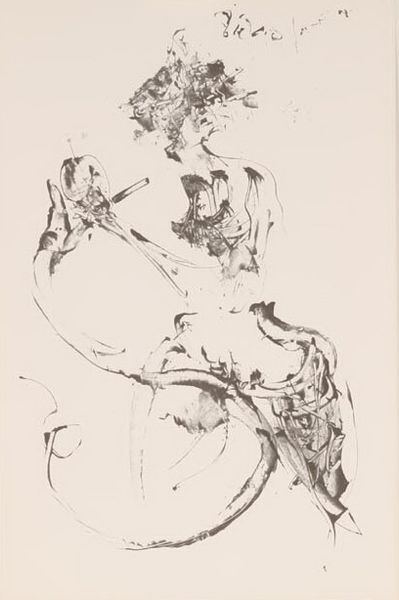
drawing, ink
#
drawing
#
contemporary
#
ink drawing
#
ink painting
#
landscape
#
ink
#
line
Dimensions: 61 x 61 cm
Copyright: Creative Commons NonCommercial
Editor: Here we have Alfred Freddy Krupa's "Dubovac," created in 2015, using ink on paper. It strikes me as desolate, a sort of post-apocalyptic landscape. What do you see in this piece, from your perspective? Curator: Desolate is a good word. I see a commentary on the relationship between humanity and nature. The starkness of the ink and the skeletal trees can be interpreted as a visual representation of environmental degradation, a consequence of unchecked human ambition and industrialization. Does that resonance at all, given the historical context of conflict in that region? Editor: It does. The bareness made me think more of something lost rather than active destruction, but I can see how those are linked. The house in the background, almost like a ghost, reinforces that. What historical context are you referring to specifically? Curator: Well, the Balkans have experienced considerable conflict and displacement, right? Krupa, being a Croatian artist, paints not just a physical landscape but also the psychological landscape of displacement, the feeling of being unmoored from history and tradition. The loose brushstrokes create a sense of instability. Do you pick up on that? Editor: Definitely, now that you mention it. It's not just a literal place, it’s also about the idea of place, and the disruption of identity connected to that. Curator: Exactly. The simplicity allows for multiple readings, each reflecting on issues from environmental destruction to the refugee experience. How does the title “Dubovac,” knowing it’s a place name, complicate this reading for you? Editor: It grounds it, in a way, but also universalizes it. It’s *this* place, but it also could be *any* place that’s been affected by these forces. I appreciate how you highlighted the interplay between personal history and broader sociopolitical issues. Curator: And I appreciate you pulling out the universality within such a culturally specific location. Thanks to Krupa’s work we’re having an intersectional dialogue across environmentalism, identity, and place.
Comments
No comments
Be the first to comment and join the conversation on the ultimate creative platform.
